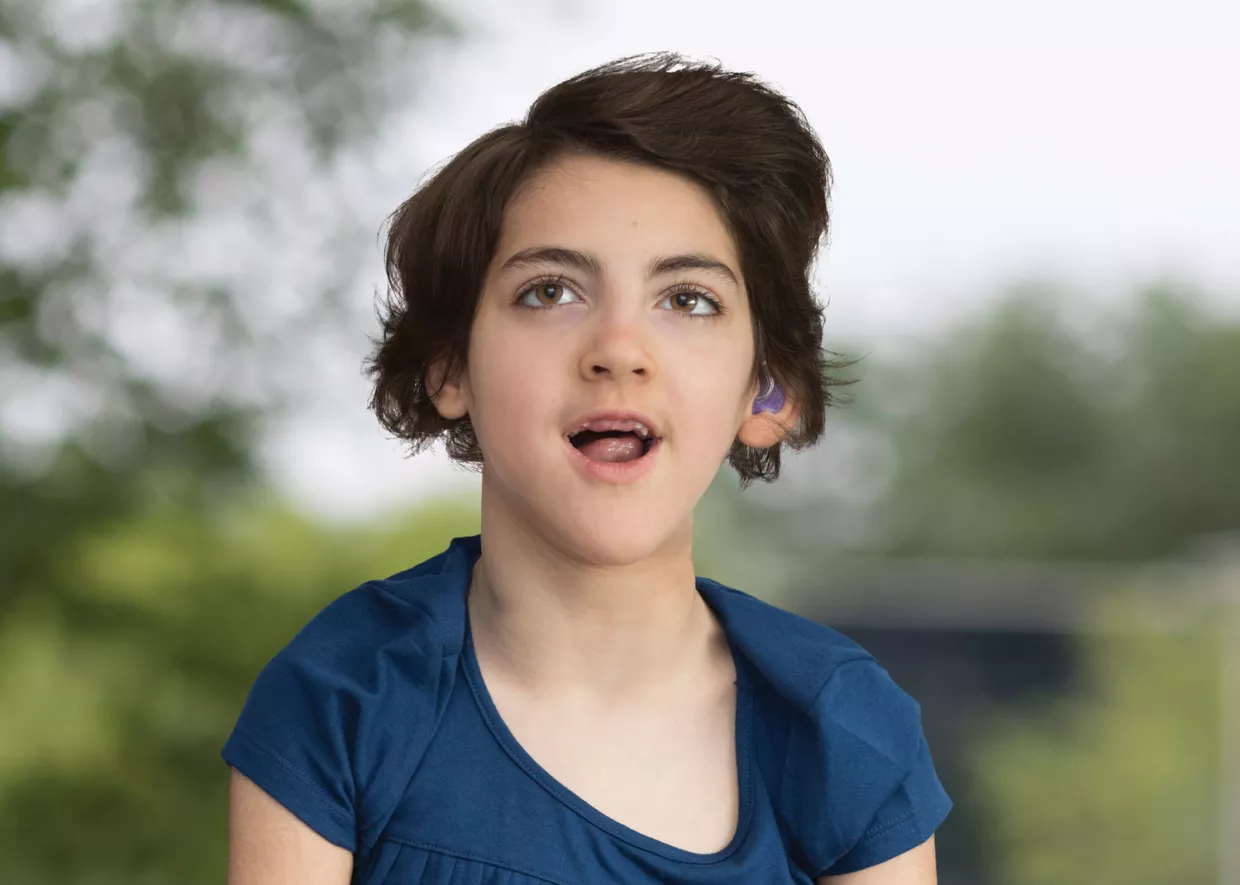Quinn Stumpf

Quinn Stumpf is many things to many people—a daughter, a sister, a teacher, and a hero.
In June 2012, April and Chad Stumpf welcomed baby Quinn. When she failed her newborn hearing screening, the Stumpfs were referred to University of Iowa Stead Family Children’s Hospital, where Quinn was diagnosed with severe hearing loss in both ears.
Over time, Quinn exhibited more health issues, including infantile spasms—a type of seizure. At 1 year old, Quinn also began experiencing dystonia—a movement disorder in which muscles contract involuntarily. A few months later, she developed gastrointestinal issues that led to malnutrition as well.
In 2015, genetic testing revealed Quinn has a disorder so rare it still doesn’t have a name.
“As we know right now, I believe 30 cases worldwide [are] somewhat like Quinn’s,” says April. “Quinn was actually part of the first published medical journal article regarding this rare genetic disease.”
The gene mutation, known as SPATA5, results in various conditions, including epilepsy, hearing loss, dystonia, and opisthotonos—a condition which causes severe and rigid muscle spasms that result in painful backward arching of her head, neck, and spine.
“At one time, we were told they didn’t think Quinn would make it past [age] 2,” says April.
Around age 3, Quinn was on so many medications that her organs began failing. Her pediatric neurologists and neurosurgeons consulted with a world-renowned neurosurgeon working in Kenya who had experience implanting baclofen pumps in children with severe malnutrition and dystonia and opisthotonos. This pump, about the size of a large hockey puck, can help deliver medications directly between the spinal cord and its protective sheath, thus sparing more damage to surrounding organs.
The neurosurgeon in Kenya suggested the pump might help Quinn, and her care team agreed.
“Quinn is the first and smallest at UI Stead Family Children’s Hospital to have the baclofen pump placed in her belly and a stent placed in her brain to deliver the baclofen,” says April. “She went from arching in pain on drugs harming her body, to now being able to sit in a wheelchair, stand in a walking aid, and actually take steps.”
Today, Quinn undergoes weekly physical and occupational therapy, uses a cochlear implant and hearing aids to help her hear, and takes several medications. For three years, she has participated in a medical cannabidiol clinical trial through a partnership between the University of Iowa and a United Kingdom-based pharmaceutical company to address her seizures.
“They were very strict about the qualifications for the trial,” April remembers. “Her pediatric neurologist applied for Quinn to be part of the trial on a compassionate use basis.”
Throughout her journey, a team approach has been essential to Quinn’s care.
“We’ve taken Quinn to other places, and I can tell you this hospital worked with us, listened to us, and listened to each other,” says April. “We’re so grateful for how they work together as a team.”
Due to the rarity of Quinn’s condition, her prognosis is unknown, but the Stumpfs can see how far their daughter has come.
“When you step back, you start to realize we’ve made ground in leaps and bounds,” says Chad.
“She’s doing amazing,” adds April. “The sky’s the limit for Quinn.”